For The Outdoor Journal's previous coverage o the Mauritian Oil Disaster, visit A Disaster in Paradise: The Mauritian Oil Spill and An Update: The Mauritian Oil Spill in Pictures.
Further update: Since publishing this article, news has broken over fears that there has been a second oil spill in Mauritius as another oil barge sinks in the lagoon. More details have been added to the bottom of this article.
It has now been a month since the Wakashio hit the pristine coral reefs of Mauritius, carrying over 3,800 tonnes of heavy engine oil, an estimated 1,000 tonnes of which leaked into the sea. During the subsequent efforts to clean up the spill, the vessel split in two and the oil slick spread to ten times its original size within days, spreading over 25km along the coast. Satellite images have revealed that over 30km of Mauritius’ beaches, mangroves and coastlines were ‘heavily impacted.’ Compared to other ocean oil spills the volume of this spill may seem tiny, a ‘drop in the ocean’, but given its location, it may well have an impact far beyond its size.
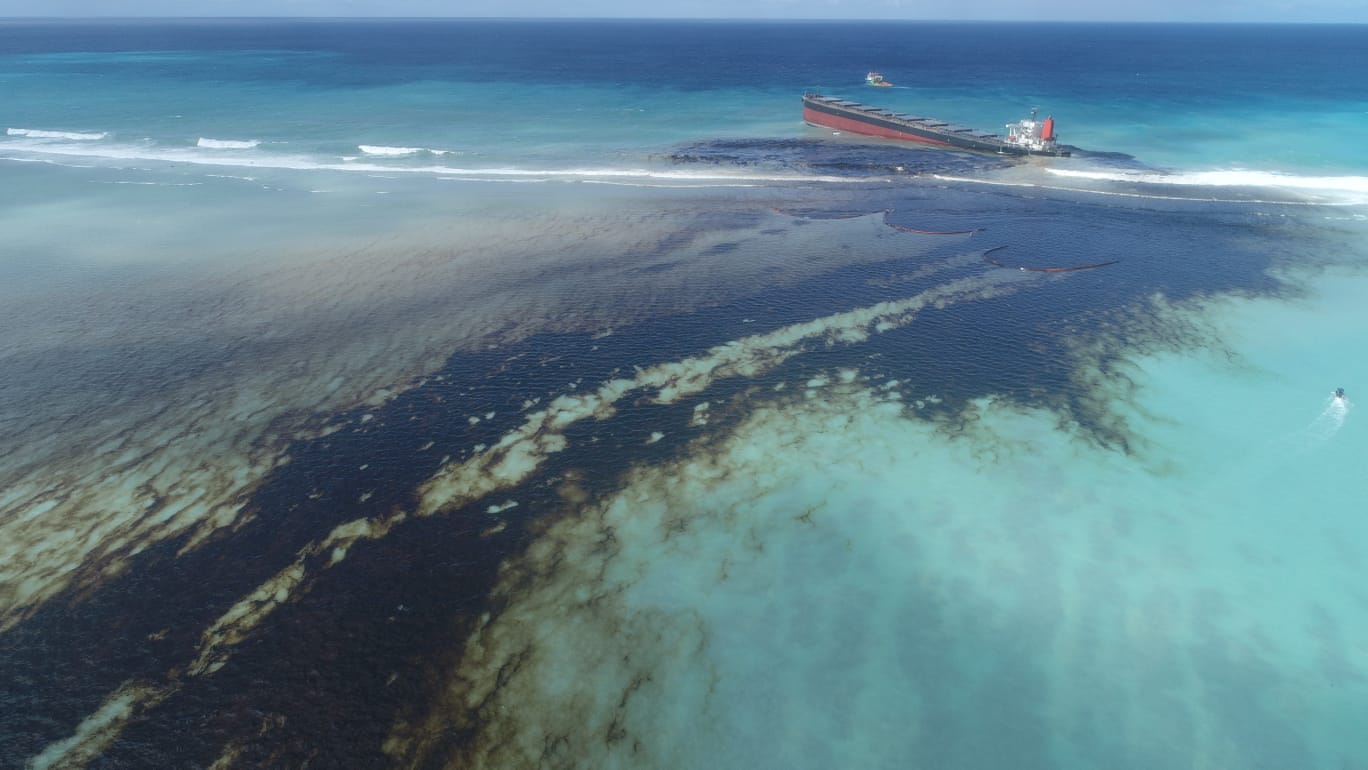
"Irreversible environmental damage"
The bulk carrier was 11 days into a month-long voyage from Singapore to Brazil, when it ran aground just a mile off the island’s southern tip on July 25. About three-quarters of the oil in its tanks was transferred off the vessel, the rest leaked into the sea, much of it coming ashore in the Ile aux Aigrettes nature reserve, home to some of Mauritius’ the last remaining dry coastal forest and the endangered species that depend on it. The oil spill “may have caused irreversible environmental damage to the south-eastern coast of Mauritius,” says oceanographer Vassen Kauppaymuthoo.

On Wednesday 18 dolphin carcasses were discovered, just a day after the large front section of the vessel was controversially sunk off the island’s coastline. By Friday 28th August the death toll had risen to at least 39. Autopsy results on 25 dolphins that had washed ashore by Thursday are expected in the coming days. Veterinarians have so far examined two of the dolphins, but according to preliminary autopsy results, no trace of hydrocarbons was detected. Environmentalists are demanding an urgent investigation as to whether the dolphins were killed as a result of the spill from the Wakashio.
"It was heart-wrenching,”
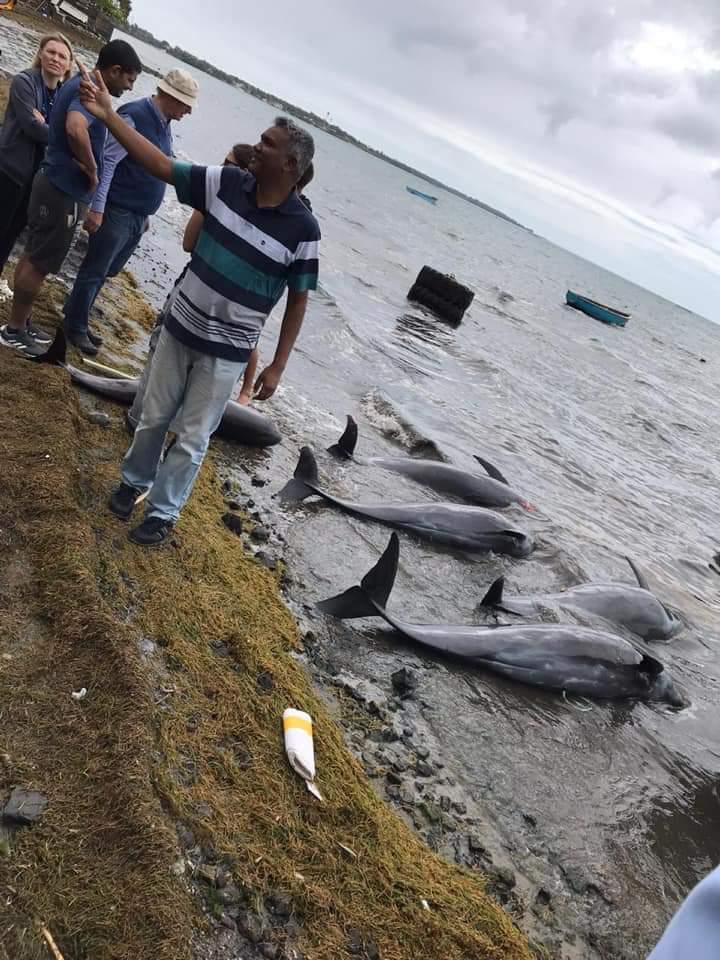
Local fisherman Yasfeer Heenaye reported seeing 25 to 30 dead or dying dolphins in the lagoon on Friday morning, as fishermen were attempting to herd ill and disorientated dolphins away from the oil pollution. “There were a mother and her baby,” he said, “he was very tired, he didn’t swim well, but the mum stayed alongside him, she didn’t leave her baby to go with the group... she was trying to protect him.” He says he saw the calf wallowing on its side, before dying and floating on the surface. Mauritian environmental and human rights campaigner, Reuben Pillay, continued to track the mother dolphin. “Initially she looked normal,” he said, “but in a few minutes also she went on her side, one fin in the water, and one out of the water and then she started flapping her tail really rapidly… she swam in circles in front of the boat, she moved her tail very violently and after about five minutes she just stopped moving, and she sunk… We didn’t know what to do. It was heart-wrenching,” Pillay said.

Greenpeace says, “this is a deeply sad and alarming day for the people of Mauritius” and has called on the government to “carry out a swift, transparent and public autopsy on the bodies collected” and an “urgent investigation to determine the cause of the deaths and any ties to the Wakashio oil spill”.
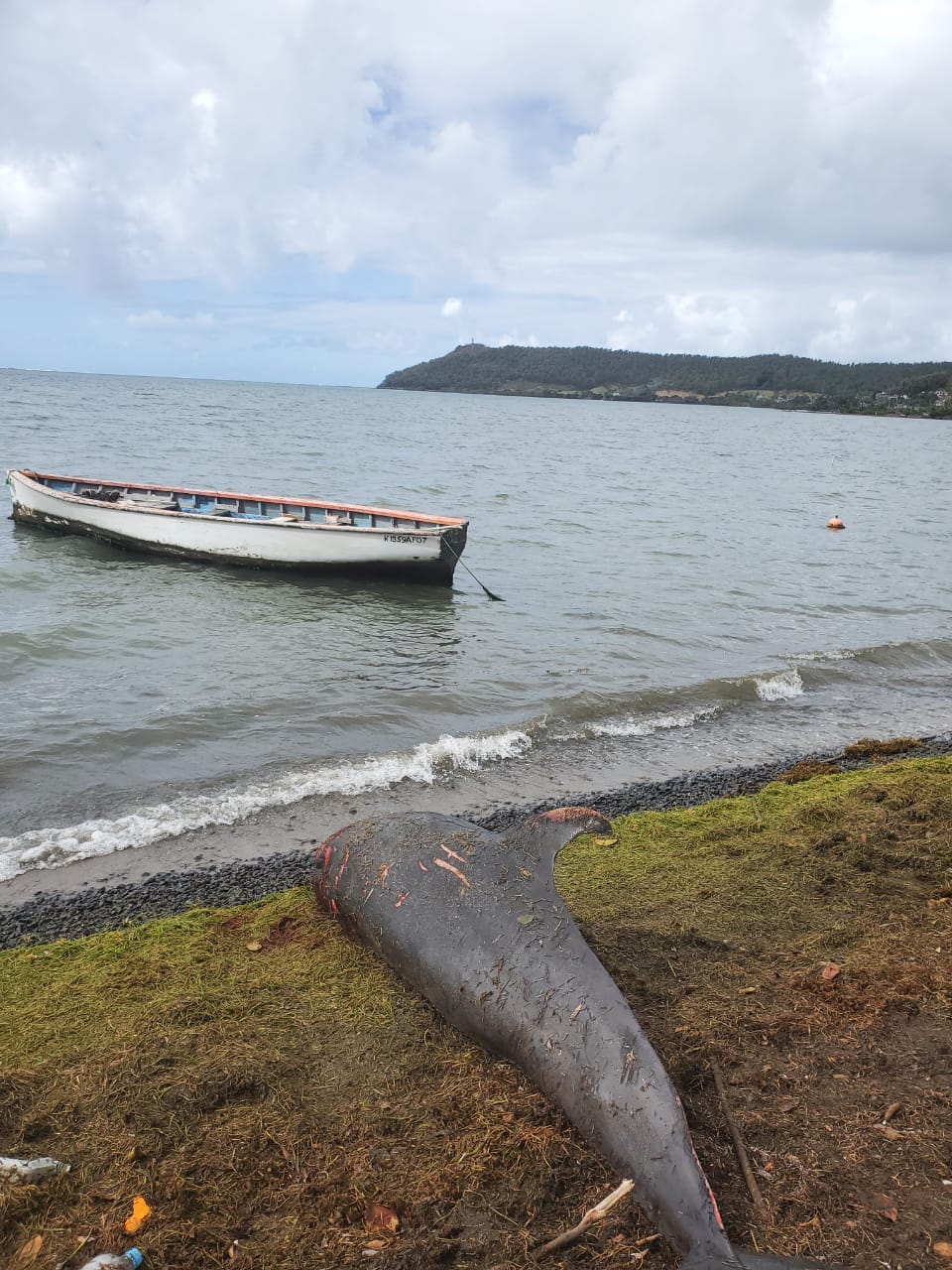
Environmentalist, Sunil Dokwarkasing, believes either the oil spill from the bulk carrier or the sinking of its bow last week caused the deaths. "The scuttling probably disturbed marine mammals in their natural habitat. There will be after-effects, and this is just the beginning." Greenpeace Africa has also warned that "thousands" of animal species are "at risk of drowning in a sea of pollution, with dire consequences for Mauritius's economy, food security, and health".
Whilst environmental campaigners suspect the deaths were either caused by the oil spill or by the scuttling of the vessel, Mauritian Fisheries Minister, Sudheer Maudhoo, maintains that initial tests on the dolphins indicate that there is no link between the oil spill and their deaths, saying "at first glance, the deaths appeared to be unconnected to the spill.” Already though, a number of fish, crabs, and turtles have been found dead in the lagoon.
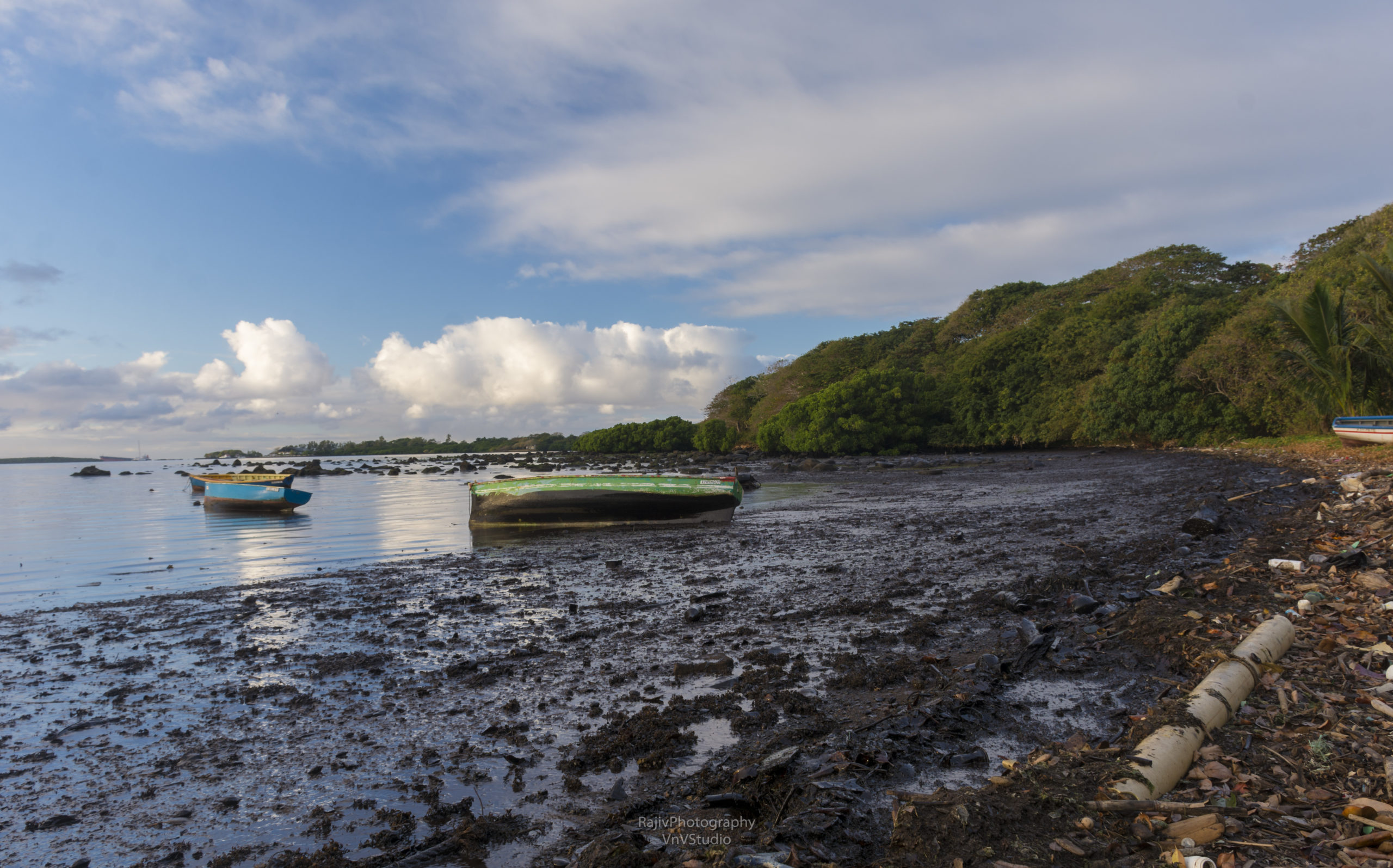
In a controversial decision, Japan’s Nagashiki Shipping, which owns the bulk carrier, said it had, as instructed by local authorities, scuttled the front part of the vessel on Monday and would continue planning for the removal of the remaining part of the ship from the reef. The Governments of Mauritius, France, and Japan, Nagashiki Shipping, and global shipping regulator International Maritime Organisation were all involved in the decision to sink the Wakashio. All have remained tight-lipped about the final destination the vessel, adding further mystery and intrigue to the saga. Meanwhile, the rear of the vessel remains stuck on the reef with 26 tonnes of oil still on board.
[embed]https://www.youtube.com/watch?v=52laphoGCKY[/embed]
“I love my country. I’m ashamed of my government”
Greenpeace strongly opposed the plan to scuttle the Wakashio, warning that sinking the vessel would "risk biodiversity and contaminate the ocean with large quantities of heavy metal toxins". In a statement on Friday 19 August, Greenpeace Africa’s Senior Climate and Energy Campaign Manager, Happy Khambule, strongly criticized the decision to sink the ship, saying, “of all available options, the Mauritian government is choosing the worst… sinking this vessel would risk biodiversity and contaminate the ocean with large quantities of heavy metal toxins, threatening other areas as well... Mauritians had nothing to gain from the MV Wakashio crossing their waters and are now asked to pay the price of this disaster.”
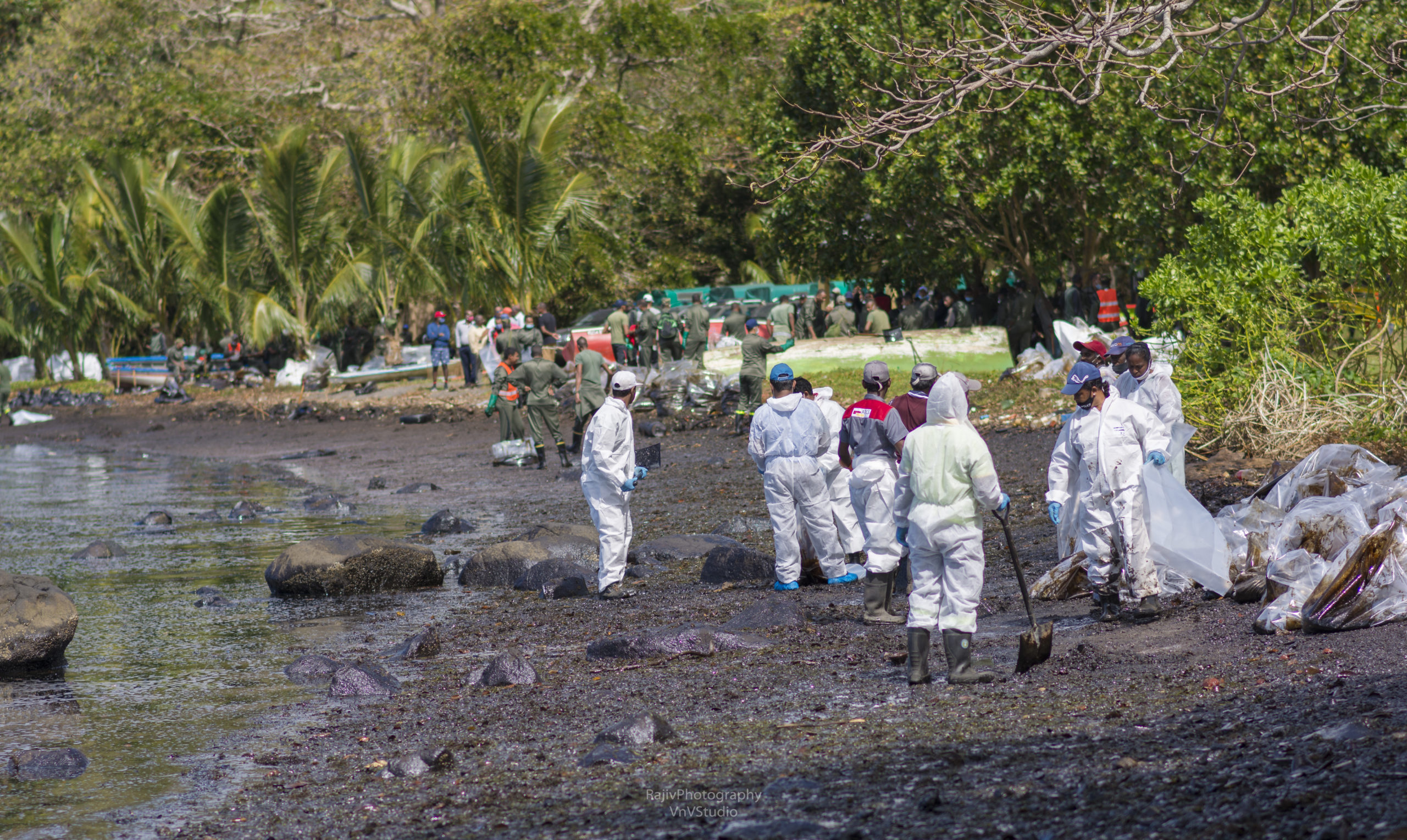
A team of British scientists has arrived to coordinate an impact assessment on the damage done to the island and to advise how to help the eco-system recover. Senior British marine monitoring scientist, Dr Sue Ware, says the team will help "determine the footprint of the oil both on the shoreline and... whether it has managed to reach any areas of the seabed" and how it has impacted mangroves, coral reefs, and various marine species. She said that efforts by local Mauritians, placing artisanal oil booms in the water, appeared to have been successful in preventing oil from reaching the protected Blue Bay wetlands area. Experts from Japan and France are also on the ground assisting the archipelago nation in the aftermath of the spill.

In other developments, the ship’s captain, Kumar Nandeshwar, and first officer, Tilak Ratna Suboda, were arrested by Mauritian authorities on 18th August and charged with endangering safe navigation under the piracy and maritime violence act. According to reports, crew members told police there had been a birthday party onboard the ship the day it ran aground. There are also claims the ship had navigated too close to the shore in order to pick up WiFi signal. The investigation will centre on why, when it was supposed to stay at least 16km from land, the Wakashio was sailing only 2km offshore when it struck the coral reef near on the south-eastern side of the island.
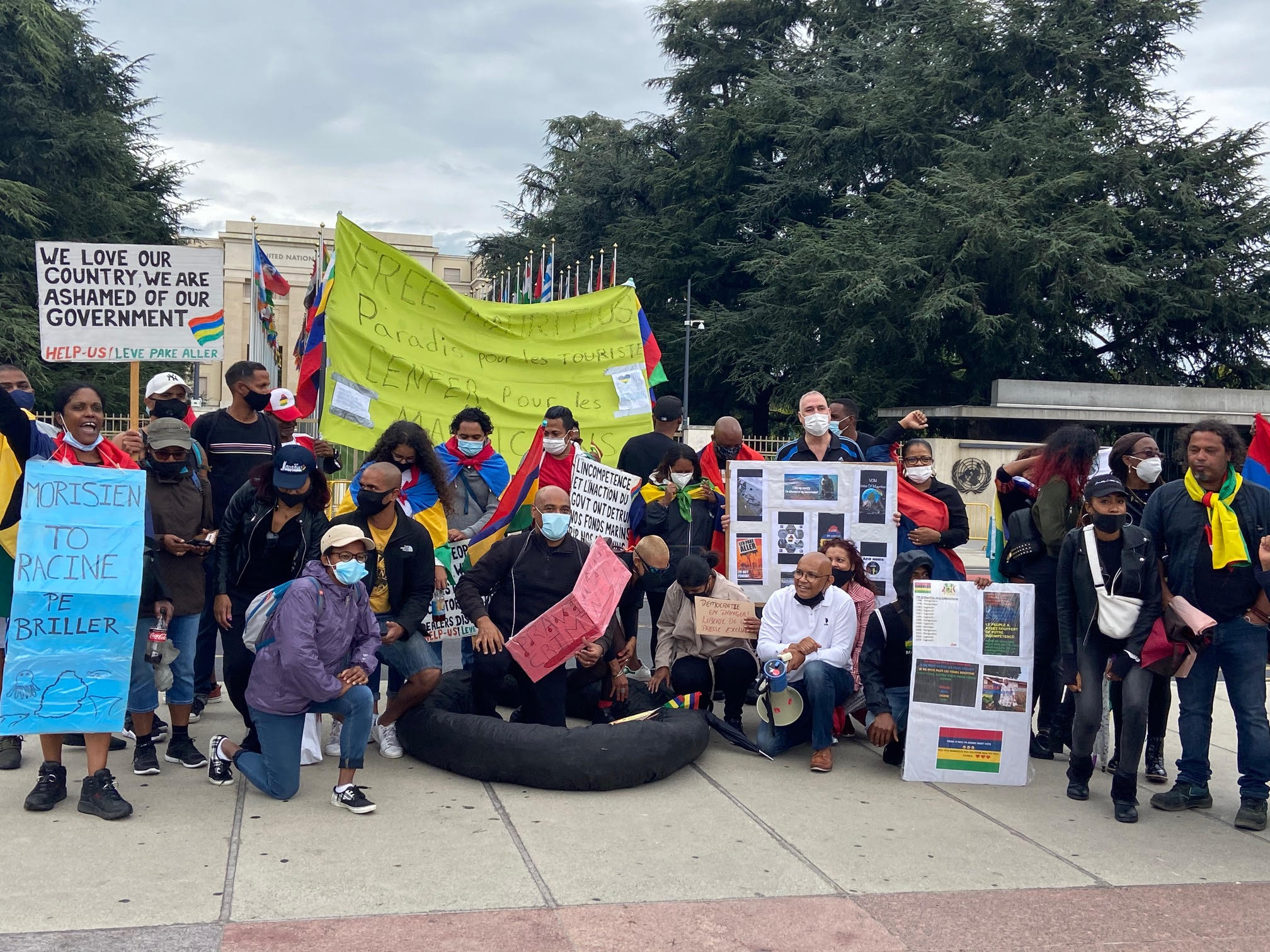
In the biggest protests the country has seen for years, thousands took to the streets of the capital, Port Louis, on Saturday to express their frustration at the poor handling and lack of transparency over the Wakashio spill. Protestors, many dressed in black or wearing t-shirts with the message “I love my country. I’m ashamed of my government”, waved the national flag, beat drums, and held up banners with messages such as “You have no shame”. The Mauritian diaspora joined in peaceful protests around the world to show solidarity with their island homeland.
Dead dolphins, wrecked reefs, black beaches, and oily waters… it’s too early to say just how much damage has been done, but one thing is certain, the damage will continue long after the oil has been cleared.
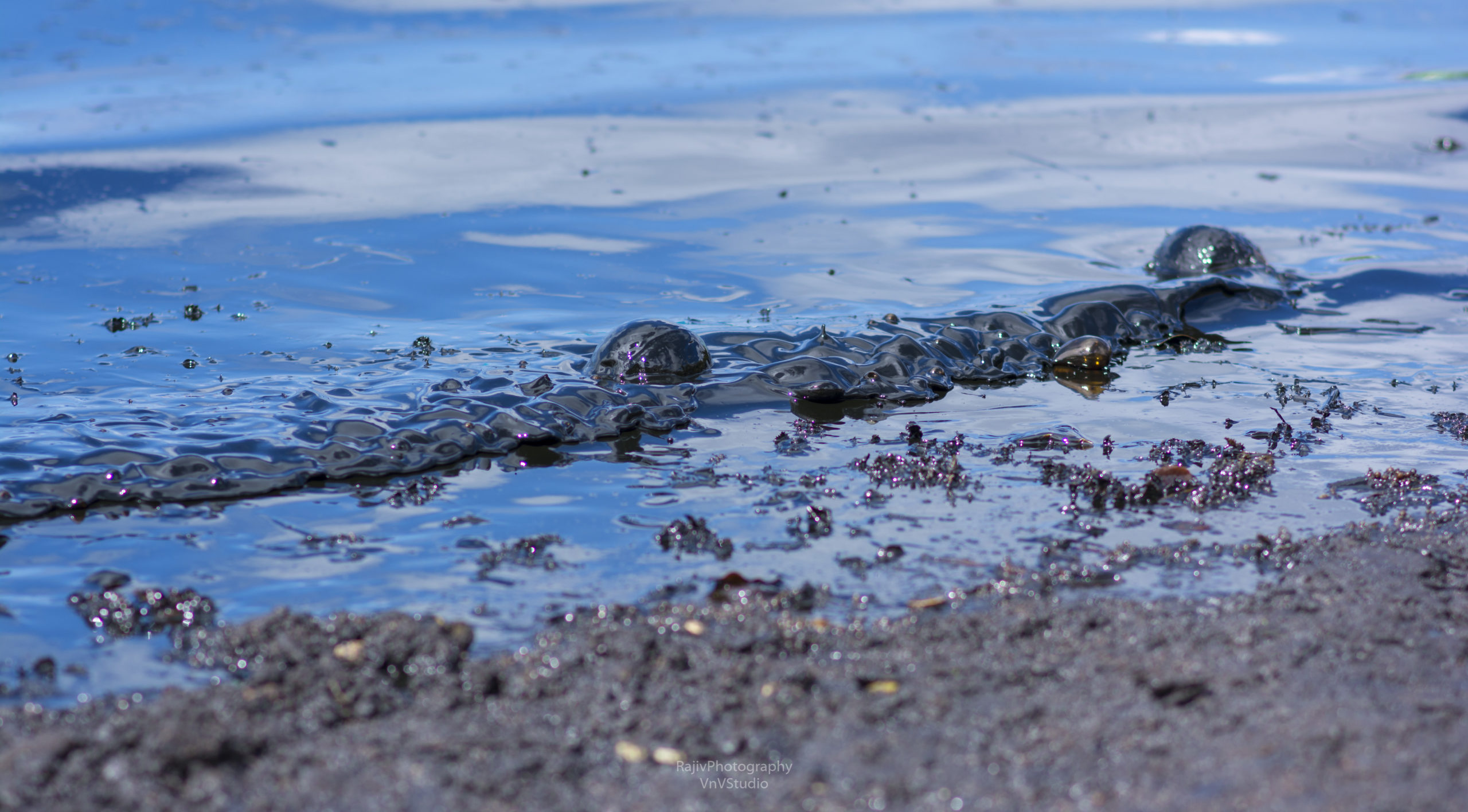
Cover photo: The carcass of a dolphin, showing signs of some post mortem shark bites, lies washed up on the shore. Photo by Shav.
Further Update: Fears of a Second Oil Spill in Mauritius as another Oil Barge Sinks in Lagoon.
In a shocking overnight development, Monday 31 August, the oil barge, ‘l’Ami Constant’, carrying oil from the Wakashio to the St Louis port, has collided with the tug boat pulling it. The tug boat, 'Sir Gaetan Duval,’ which had been involved in the Wakashio salvage operation, has sunk in the coral lagoon and an operation was launched to rescue the 8 crew. There is much confusion regarding the circumstances of the sinking.
The Mauritian Port Authority has confirmed that the barge was transporting oil from the Wakashio. At present, it is unknown how much oil the barge was carrying. The tug had encountered difficulties with heavy seas and collided with the oil barge in the darkness. Following the collision, the tug started taking on water forcing the crew to jump into life rafts. Due to the conditions in the water, the life rafts subsequently overturned. Four crew members have been rescued, four remain unaccounted for. All were wearing life jackets at the time of the collision.














